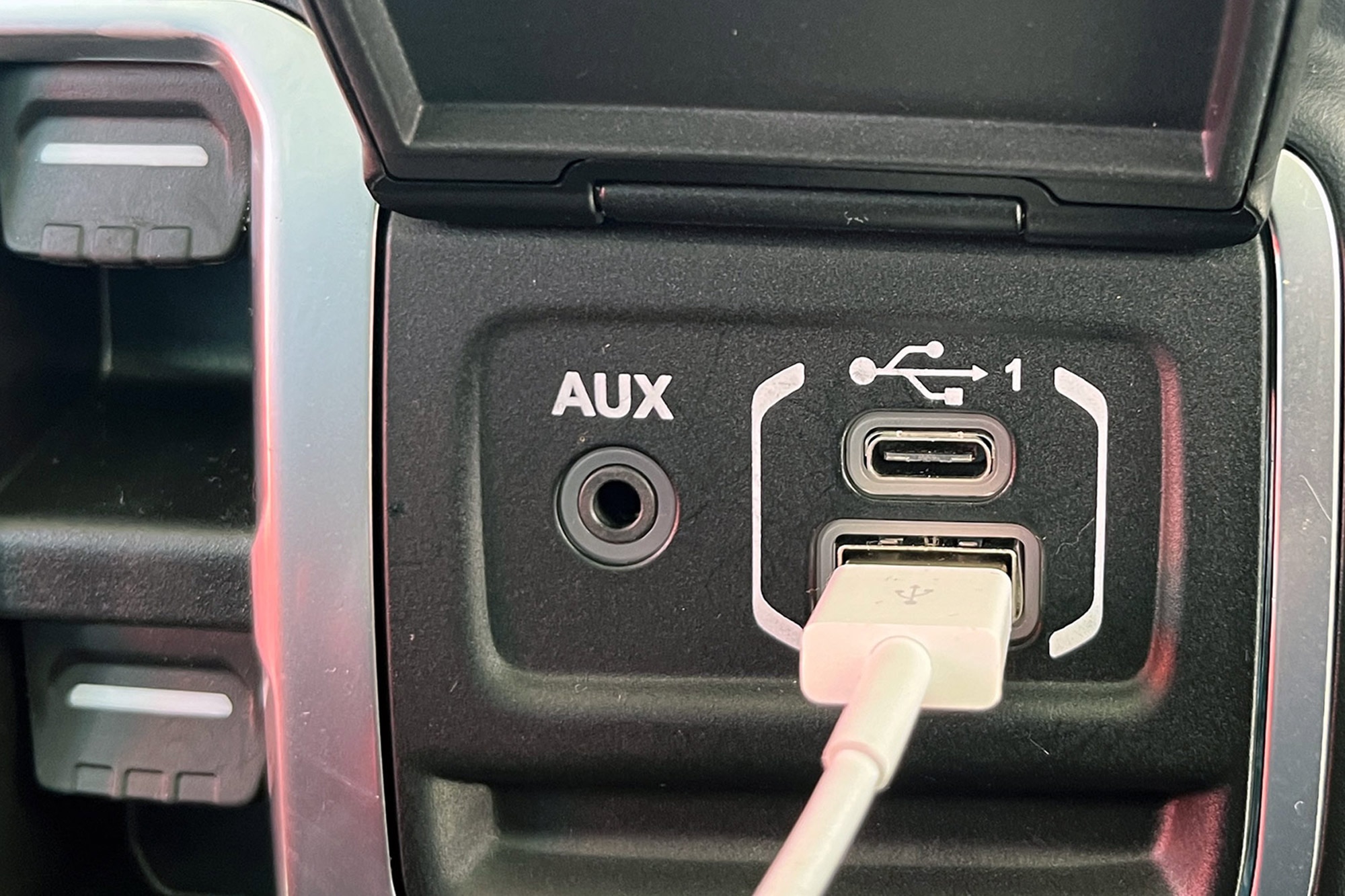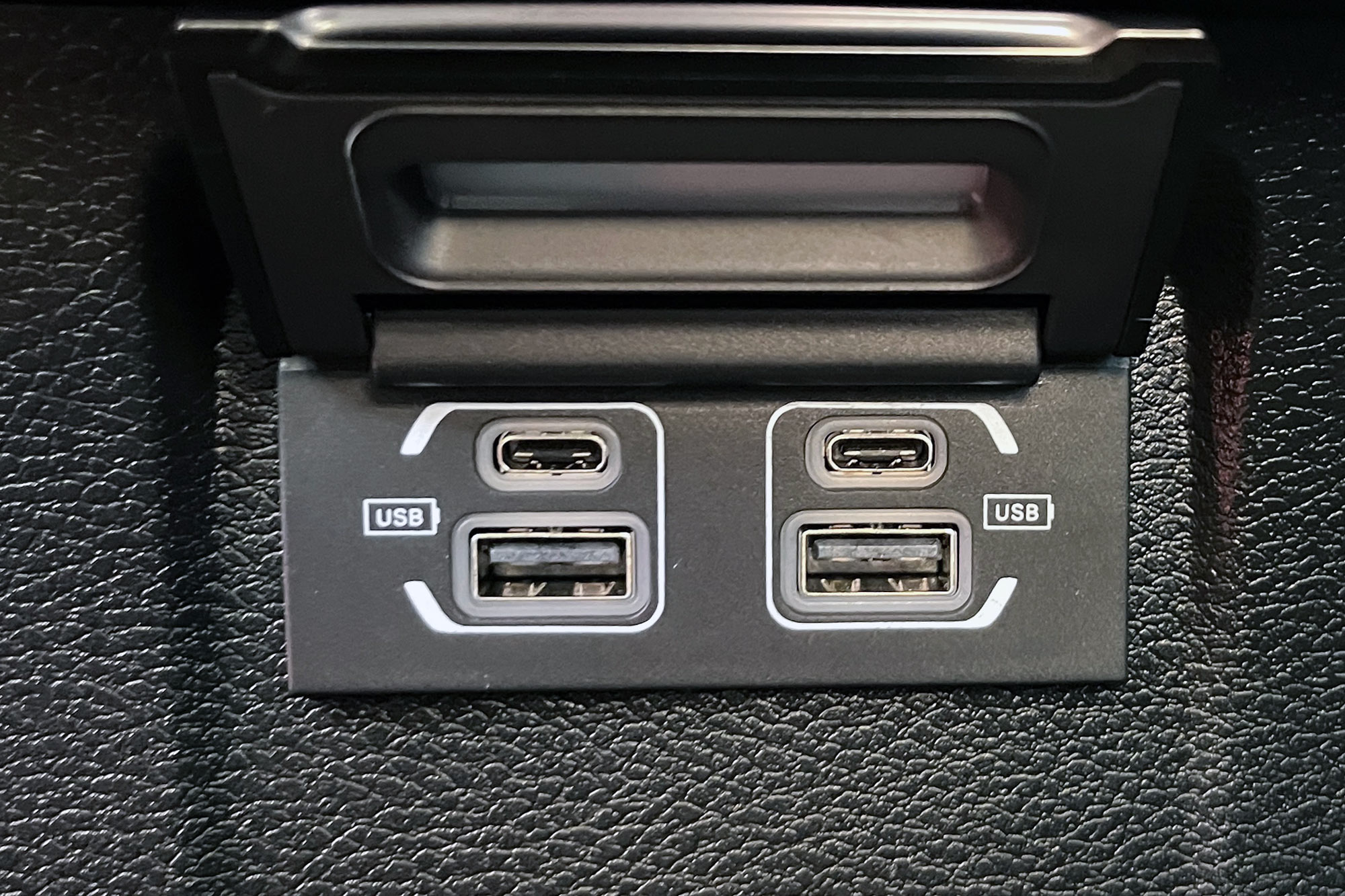A Guide to Automotive USB Ports
Your car can deliver convenient charging and more on the go.
 Belema Iyo | Capital One
Belema Iyo | Capital One
In the past, charging a phone, tablet, or personal device in a car required a third-party accessory plugged into a 12-volt outlet. Fortunately, nearly every modern vehicle on sale today has a universal serial bus (USB) port, making those extra purchases unnecessary.
In-cabin USB ports come in different sizes and specifications, allowing for better connectivity and faster charging speeds.
USB-A Is the Tried-And-True Option
The familiar rectangular USB-A has been around since the mid-1990s as a plug and port for various computer devices. Since 2006, these ports have found their way into car cabins to help passengers charge their devices.
Things have improved significantly since those early USB days. Older USB-A ports could supply up to 2.5 watts of power to charge devices, while modern ports can provide up to 7.5 watts, which helps reduce device recharge times.
USB-C Is Becoming More Common in Cars
A newer USB port, USB-C, is also available. First introduced in 2014, more automakers have been swapping out USB-A for the new USB-C port. The USB-C port is recognizable by its flat oval shape. It occasionally bears an icon indicating which features it supports, such as higher speed charge rates or faster data transfer speeds.
The USB-C standard has gained momentum lately as a replacement for the old port because it offers faster charge speeds and data rates when compared to the older USB-A standard. In Europe, USB-C is the standard for connectivity and charging, which could lead to widespread adoption.
Some automakers have switched all in-car ports to USB-C. Other automakers may offer both USB-A and USB-C ports for convenience. Adoption of USB-C is increasing, with predictions that more than a quarter of all vehicles will have USB-C by 2025.
A USB-C Port Will Charge Many Devices Faster
A USB Type-C port can put out a maximum of 240 watts — assuming the target device can accept that much power — while charging with a USB-A port will top out at 7.5 watts. That should recharge a dead phone or tablet quickly.
Even better, the port can supply enough power to recharge some laptops. USB-C can transfer data at much higher rates, providing better telematics and smartphone projection for in-car infotainment systems.
In addition to being faster, USB-C ports don't need to be inserted in a specific direction like a USB-A plug, making them much more user friendly.
 Belema Iyo | Capital One
Belema Iyo | Capital One
USB Ports Also Handle Data Transfer in a Car
USB ports aren't just for power. Cars with Android Auto or Apple CarPlay support can use the USB port to communicate data from your phone to your vehicle's infotainment system, adding connectivity to your ride.
Some infotainment systems also support USB thumb drives for various entertainment and system functions. Load the drive with some movies, recordings, or music, and you can listen to them while driving — or just when parked for videophiles.
Furthermore, USB ports allow vehicle functions to be updated at home through their infotainment systems. Prepare a USB drive with files from the automaker and plug it into the car, and you can enjoy the latest features, map data, or bug fixes for your in-car technology. That USB port might just save you a trip to the service department.
USB Ports have various icons above or beside them. These icons indicate the features the port supports. For example, a USB-C port may have an icon of a battery with a lightning bolt in it, which suggests that this port can fast charge a device.
Other ports, with the triangle-circle-square USB icon or a smartphone image, indicate that it works as a data port for Android Auto or Apple CarPlay connectivity.
You'll Need the Right USB Cable
Not all cables are equal. While two USB-C cables may look the same, one may lack specific pins that enable features such as faster charge or data transfer speeds. Some cables have limited power ratings, so confirm the cable specifications you intend to use to get the most out of it.
If you need to use one port but don't have the corresponding cable, you can use an adapter to convert the plug from one type to another, helping you use a USB-A cable on a vehicle's USB-C port or vice versa. Sometimes, these adapters are less effective than dedicated cables and lack essential features such as fast charging.
USB ports can hide in armrests and gloveboxes. You can also find them in plain sight throughout the cabin. Some are on the dashboard or center console, and automakers also often put ports within reach of rear-seat passengers. These can be found on the rear center console, behind the front seats, or sometimes on three-row vehicles, in the armrests of the third row.
Written by humans.
Edited by humans.
 Sami Haj-Assaad
Sami Haj-AssaadSami loves writing about cars and diving into their high-tech, innovative, and exciting features. He's been an automotive journalist since 2012, having written feature stories, reviews, and performing on camera for AutoGuide, Driving.ca, TechSpot, AutoTrader.ca, NUVO Magazine, and Car and Driver. He's won a number of awards from the Automotive Journalists Association of Canada, including Journalist of the Year in 2020. You can hear him weekly as one of the hosts of the Unnamed Automotive Podcast.
Related articles
View more related articles